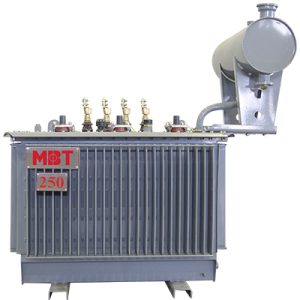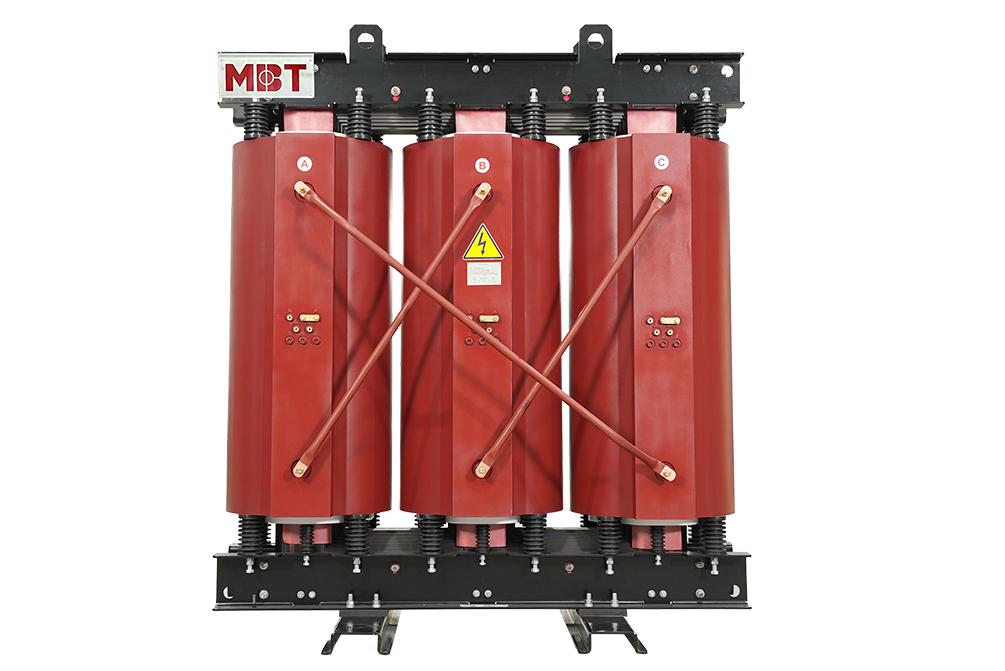
Temperature Rise Test of Oil- Immersed Transformer
Temperature Rise Test of Oil- Immersed Transformer
A temperature rise test of a transformer is one of the key test types of an oil transformer.
In this test, the temperature rising limit of the transformer oil and transformer winding is checked whether it is described by the manufacturer.
Temperature Rise Test for Transformer Oil
- First, the LV winding of the transformer is short-circuited.
- Then one thermometer is put in a pocket in the transformer top cover. The other two thermometers are put at the inlet and outlet of the cooler bank respectively.
- The voltage of such value is put to the HV winding that power input is equivalent to no-load losses plus load losses corrected to a reference temperature of 75oC.
- The three wattmeters method is applied to measure the total losses.
- During the test, the thermometer already placed in the pocket of the top cover indicates hourly readings of top oil temperature.
- Hourly readings of the thermometers put at the inlet and outlet of the cooler bank are also saved to calculate the mean temperature of the oil.
- A thermometer is placed around the transformer at three or four points situated at a distance of 1 to 2 meters from and halfway up the cooling surface of the transformer to measure ambient temperature.
- Temperature rise test for top oil of transformer should be continued until the top oil temperature has reached an approximate steady value less than 3oC in one hour. This steady value of the top oil is defined as the final temperature rise of transformer insulating oil.

- There is another method of determination of oil temperature. Here the test is allowed to be continued until the top oil temperature rise does not change more than 1oC per hour for four consecutive hours. The final value for the temperature rise of the oil is the lowest reading during this time.

During the temperature rise test for the top oil of the transformer, we apply a voltage to the HV winding and cause the LV winding to short-circuit. So, for full load rated current flows in the transformer, the rated transformer voltage will be much more than the supply voltage required. We know that the core loss of a transformer is subject to voltage. So, core losses will not occur in the transformer during this test. In order to get an actual temperature, rise in the transformer oil, we have to compensate for the lack of core losses by additional copper loss in the transformer. To make up for these losses, transformers draw much more current from a source than the transformer’s rated value.
Temperature rise limits of the oil-immersed transformer are as follows:
|
|
Temperature rise limit |
Temperature rise limit |
Condition |
|
Winding |
55oC |
60oC |
When oil circulation is natural
|
|
60oC |
65oC |
When oil circulation is forced
|
|
|
Top Oil |
50oC |
55oC |
When the transformer is sealed & |
|
45oC |
50oC |
When the transformer is neither sealed |
NB: These temperature rises limits described in the above table are the temperature rise above the temperature of the cooling medium. That means these are the difference between oil or winding temperature and temperature of cooling water or air.
Winding Temperature Rise Test on Transformer
- After completing the temperature rise test for the top oil of the transformer, the current is reduced to its rated value for the transformer and is stable for one hour.
- The supply is switch off and the short circuit connection to the LV side and the short circuit and supply connection to the HV side is opened after one hour.
- But the fans and pumps continue to operate (if any).

- Then the resistance measurement of the windings is implemented quickly.
- But there is always an unavoidable minimum 3 to 4 minutes time gap between the first measurement of resistance and the instant of switching off the transformer.
- Then the resistances measurements are the same 3 to 4 minutes time intervals over a period of 15 minutes.
- Graph of hot resistance versus time is plotted, from which winding resistance (R2) at the instant of shut down can be extrapolated.
- From this value, θ2, the winding temperature at the instant of shut down can be determined by the formula given below-

Where R1 is the cold resistance of the winding at temperature t1.
For determining the temperature rise of the winding, we have to apply the above indirect method. That means the resistance of hot winding is measured and determined first and then from that value, we have to calculate the winding temperature rise, by applying the resistance temperature relation formula. Unlike oil, the winding of the transformer is not accessible for external temperature measurement.














